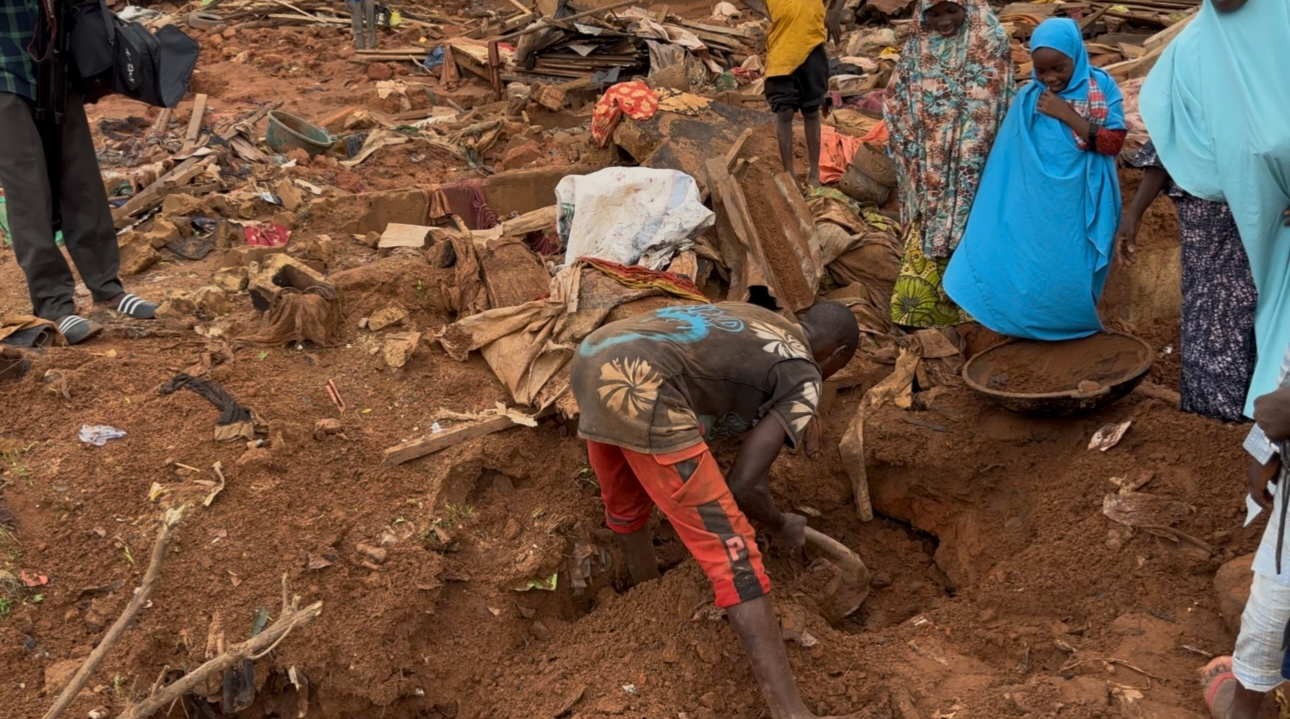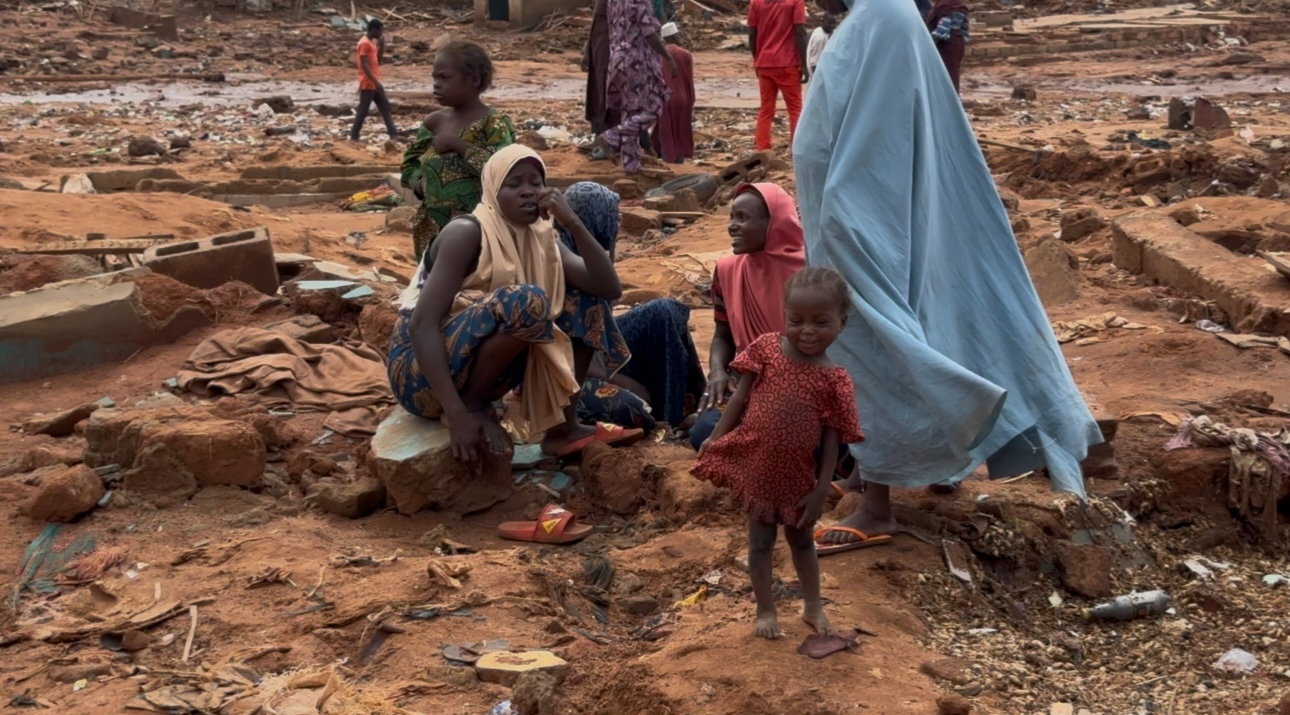When the rain began falling in late May, Usman Ndagi thought it was like every other downpour since the start of the rainy season in his hometown of Mokwa. But what seemed at first like harmless rain has brought days of devastation for himself and many families in the town in northern Nigeria.
Ndagi woke up to screams on the morning of May 29 to see that the rain had flooded his entire neighbourhood. While his house was not directly affected, from a distance he could see people being swept away by the water. They were “calling for help but we couldn’t help them because it was risky”, he said.
Three of Ndagi’s relatives – some of whom had returned home for the Eid celebrations – are among the more than 200 people confirmed dead from the floods, while rescue officials are still searching for over 500 others.
Ndagi belongs to a group of youths who are actively helping to rescue victims, search for bodies and relocate people to camps where they can receive humanitarian support.
Early warnings for heatwaves can save lives – and we need them now
“It is unimaginable,” Ndagi told Climate Home, detailing how dead bodies are decaying under the rubble and infusing the air with a terrible smell.
Floods made worse by climate change
With over 3,000 people displaced from their homes, the Nigerian government has blamed the flood partly on climate change, adding that the heavy rain overwhelmed Mokwa’s drainage and was worsened by unregulated housing blocking a usually dry River Dingi, a tributary of the Niger River.
Ibrahim Hussaini, acting director-general of Niger State’s emergency agency, said the flood was unprecedented and such loss of life had never been recorded before in Mokwa. He said the impacts of climate change, climate variability and deforestation have become such that “areas that were never previously prone to flooding are now being flooded”.
In 2022, scientists from the World Weather Attribution group said that floods in West Africa at the time were caused by climate change exacerbating heavy rainfall. They have not yet conducted a study on the floods that hit Mokwa in recent days.
Green groups push back on fossil gas funding as AfDB welcomes new head
Earlier this year, the Nigeria Hydrological Services Agency (NIHSA) pointed to Niger State, where Mokwa is located, as one of the states at risk of flooding from April to November. In its 2025 flood outlook, the agency warned that the country as a whole is experiencing increasingly severe floods and there is an urgent need for comprehensive flood protection measures.
Infrastructure failure
Nigeria’s water resources minister Joseph Utsev also noted that “the absence of efficient alternative drainage channels worsened the situation” in Mokwa.

Last year, the Niger State government received a $10 million loan from the World Bank, part of which was to be used to construct storm-water drainage structures in Mokwa and other towns to address flooding and gully erosion. But a request for bids to carry out the project was only published in April, and construction had not started before the floods.
In dense towns like Mokwa – whose population numbers around 400,000 – and across much of Nigeria, drainage systems are either poorly designed or completely overwhelmed. And with the rapidly growing urban sprawl, lack of planning, erection of buildings in wetlands and floodplains, and drainage systems choked with waste, heavy rains quickly turn into disasters.
As EU acts to stop greenwash, funds drop climate claims from their names
Lack of an adaptation plan
Despite warnings from the country’s hydrological and meteorological agencies, floods are a rising threat to Nigeria’s inhabitants, causing significant loss of life and destruction to property and infrastructure annually. Last year, according to the country’s emergency management agency (NEMA), over 1 million people were affected by floods across the country, which caused more than 300 deaths.
In its flooding outlook this year, NIHSA had explained that efforts to prevent and adapt to flooding have, for too long, being “fragmented and reactive” and usually “left to humanitarian responses at the last minute”.
Lucky Abeng, a Nigerian climate activist, said the devastating flood in Mokwa shows that state-level authorities have little to no idea about early warning systems. He said that, beyond releasing early warnings at the national level, there is a need for climate education and outreach that would enable community champions to communicate disaster risk reduction measures in local dialect.
With seasonal rains set to intensify in the coming months, Abeng said he hopes “the government will move away from waiting for these types of disasters to strike and then bring in relief materials, to proactively engaging communities… on measures to reduce the magnitude of such reoccurring disasters”.
Brazil’s new funding initiative can help bring rainforests back from the brink – if done right
A government official, who did not want to be named, told Climate Home that addressing these challenges will be better prioritised when the country finalises its National Adaptation Plan (NAP) – a key requirement by countries under the UN climate regime – to help build capacity and resilience against climate change. So far 63 developing countries, including South Africa, Kenya and the Democratic Republic of Congo, have submitted their plans.
Nigeria has a NAP framework that was developed in 2020, but the actual plan is yet to be completed. Once finalised, the official said it will provide recommendations on measures that can be incorporated into plans when building infrastructure such as roads – and each sector of the economy will ensure that budget plans have an adaptation focus.

He added that the NAP could also include recommendations such as the need for innovative financing tools such as flood insurance or community resilience funds to help address disasters like the Mokwa flood.
The official, who is part of the team working on the country’s adaptation plan, said “we are doing this, so everybody – including the government, ministers in the housing sectors, health, roads – will have these measures when planning and the government can also make provisions for adaptation in the budget.”

